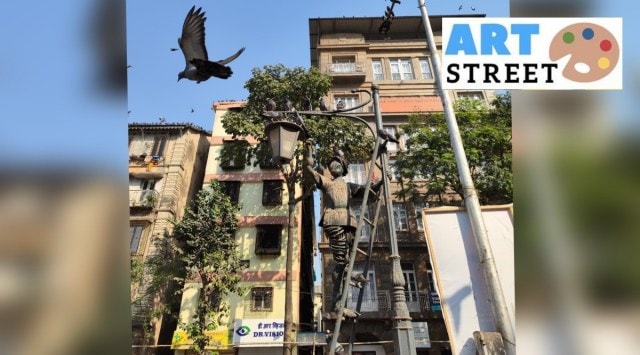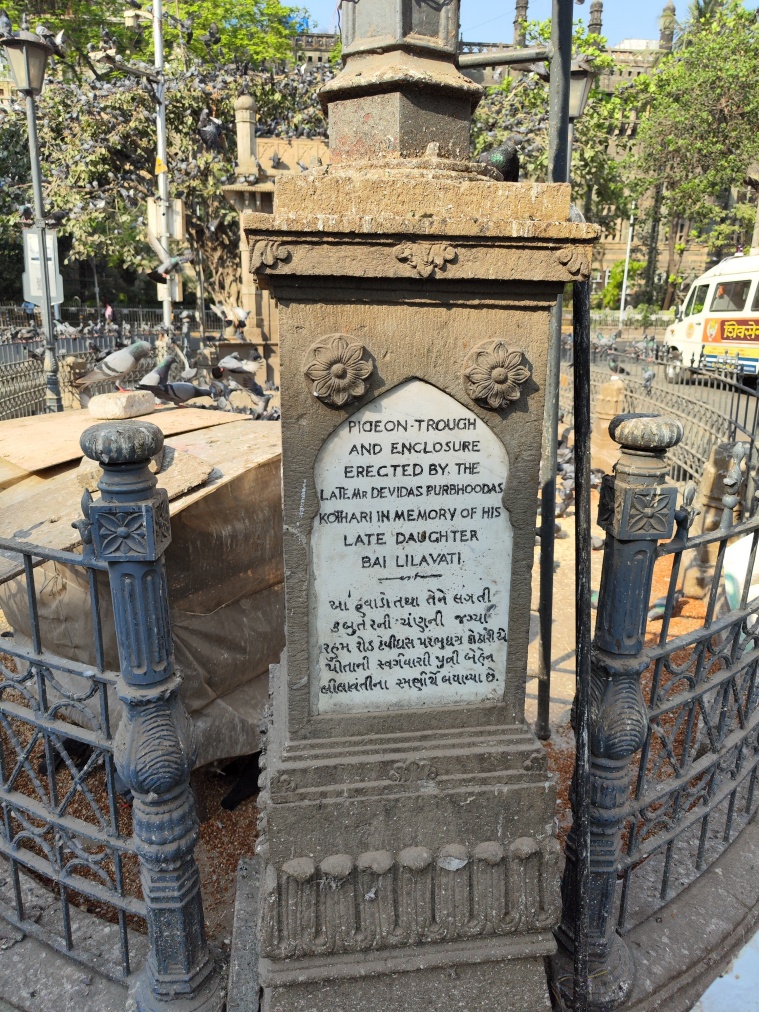Stay updated with the latest - Click here to follow us on Instagram
Art Street: An installation that sheds light into the lamplighters’ role in erstwhile Bombay
The artwork near the General Post Office in South Mumbai documents the cultural significance of old gas-lit lamps which once lit up Mumbai streets.
 The lamp lighter installation. (Express Photo)
The lamp lighter installation. (Express Photo) While restoring a century-old water fountain near the General Post Office in South Mumbai in 2017, architects and heritage conservationists noticed a bilingual plaque in English and Gujarati engraved on the ornamental base of a lamppost. It was then decided that along with the restored fountain ‘Kothari Pyau’, the spot will mark the cultural significance of old gas-lit lamps which lit up the streets of the then Bombay as an ode to the erstwhile profession of lamplighters.
Architect Rahul Chemburkar, Vaastu Vidhaan projects, said that while the restoration of the Kothari Pyau was in progress, a decision was taken to creatively document the city’s heritage by making an installation of a lamplighter.
 A bilingual plaque in English and Gujarati hangs on an old lamppost nearby. (Express Photo by Sadaf Modak)
A bilingual plaque in English and Gujarati hangs on an old lamppost nearby. (Express Photo by Sadaf Modak)
“We also found old photographs of lamplighters and drew a sketch on the basis of those. We had put up the idea before the heritage committee that reviews the fountain’s restoration and they liked it too,” Chemburkar said.
The installation was made out of scrap metal and took two months to be sculpted by Cobalt Art.
According to historians of the city, the first gas lamp was installed in Bombay for domestic use back in 1833, when renowned shipbuilder and engineer Ardaseer Cursetjee Wadia used coal gas to illuminate his house in Mazgaon.
The then Governor of Bombay, John Fitzgibbon, visited Wadia’s home and was impressed by the lamps. The B.E.S.T Story by S N Pendsay says that it was only after a decade, in 1843, that street-lighting in the city came up in the form of kerosene lamps. Gas lamps came up a few years later and lampposts were installed at a few streets initially, including Esplanade Road, which is today’s MG Road where the lamplighter installation stands.
The gas lamps required to be lit up at dusk and extinguished in the mornings and the then municipal corporation had to appoint professional lamplighters to do the rounds of the streets twice for this job. Pendsay’s book notes how this was an exciting sight for Bombay residents who would gather and follow a lamplighter to see the streets being lit one lamp at a time. The lamplighters would usually carry a ladder and a stick or a pole to light and extinguish the lamps.
“The installation was planned to depict the community of lamplighters, and their traditional wear as part of the city’s cultural heritage. It was decided that it would not have a face to depict the community and profession than one person,” Chemburkar said.







